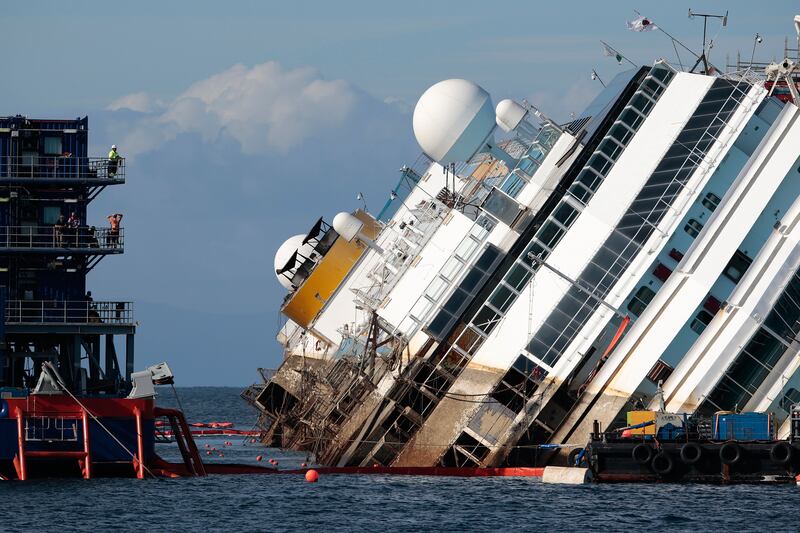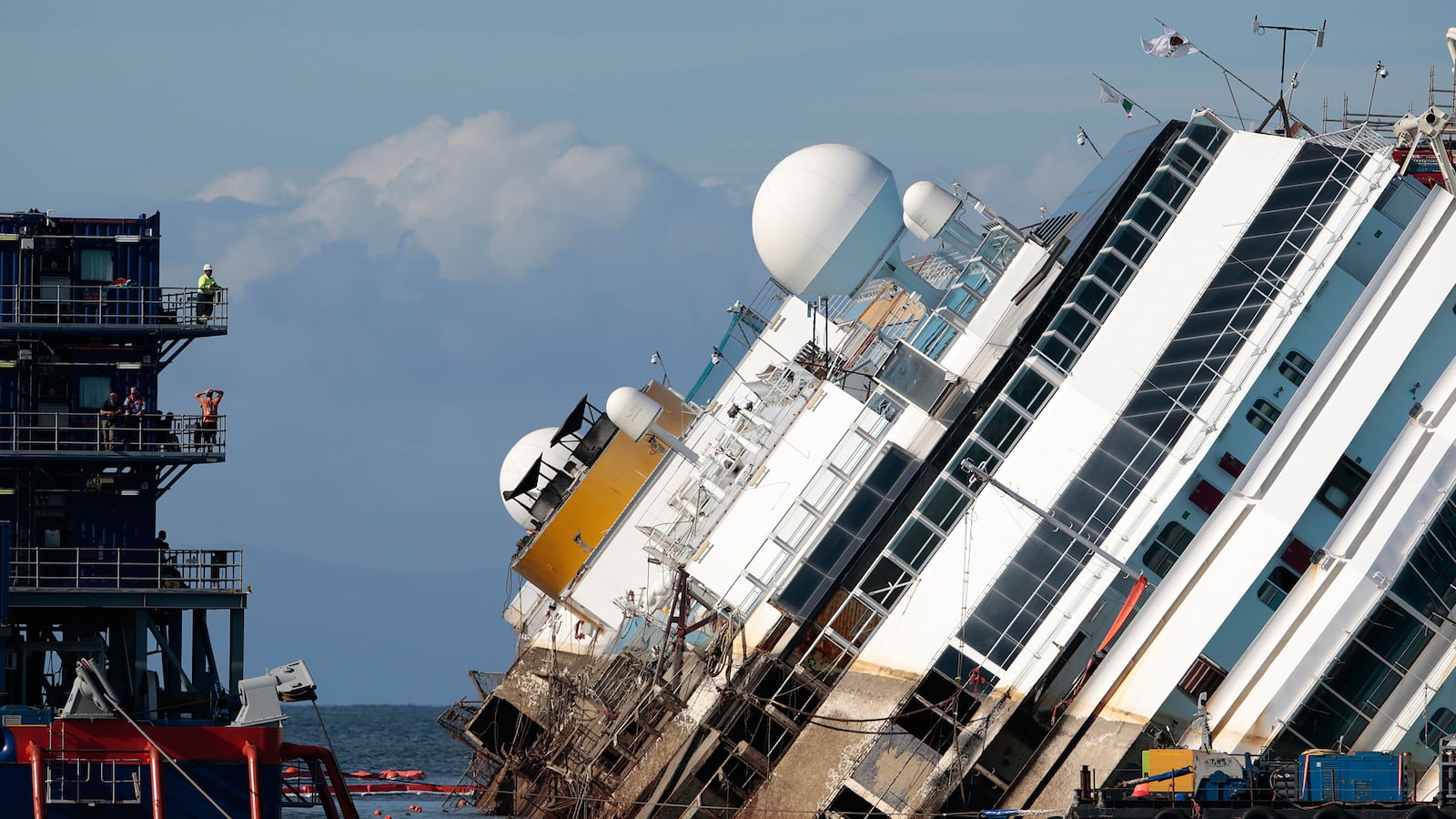Turns out, it’s not so easy to rotate a sunken ship after all.
Salvage operators off the Italian coast ran into a couple of snags on Monday as they attempted to right the very wrong shipwreck of the Costa Concordia, which hit the rocks off the picturesque island of Giglio in Tuscany on Friday the 13th of January 2012.

First, a late-night torrential sea storm nearly halted operations. Roaring thunder and violent bolts of lightning almost seemed like an ominous warning that the ship wanted to stay just where it was. The storm delayed the placing of the command center, which was to be perched on a barge just a few feet in front of the Concordia’s bow by 6 a.m. Instead, salvage operators could only begin the command center placement three hours later.
The second glitch came a few hours after that, when some of the cables used to pull the ship upright started to slack. Operations were slowed so a team of eight technicians could shimmy up the ship to tighten up the cables.
Then, the high-tech and logistically complicated endeavor became about as exciting as watching paint dry. For more than two hours, hundreds of journalists from around the world kept their lenses fixed on the still waters, breathlessly noting that there was really nothing to note quite yet.
Then, subtly, a line of scum started to build. And then, little by little, the yellowish brown stains grew. Because the movement of the giant vessel was so slow, the only way to mark the rotation was by watching the slime line rise. It took eight hours for the ship to rotate just 10 degrees. When it hit 20 degrees early Tuesday, salvage operators found out that their plan worked, as gravity took over and the Costa Concordia essentially finished the jobs and righted itself.
Thirty-two people died when the Concordia went down, and two of those bodies have still not been recovered. Costa officials said an initial sweep with robotic cameras did not turn up any remains, but that it was far too dangerous for divers to go down and search.
Russel Rebello, 33, from India, was a waiter on the ship and was last seen helping passengers into life boats. Maria Grazia Treccanchi, from Sicily, was celebrating her 50th birthday. She was on the phone to a friend who reportedly heard her say, “We’re sliding into the sea,” as the phone went dead. Part of the reason the Concordia wasn’t blown up or dismantled on site is because the bodies of those last remaining victims presumably might still be inside the ship.
On Monday, public-relations officials for the Costa Crociere company and a few representatives from their parent company, Carnival Cruises in Florida, scurried between television crews stationed on the Giglio harbor, shuttling between experts and salvage pundits to fill the time as the ship rotated in the background. They handed out sandwiches to hungry journalists in one of two media centers (one a floating tour boat, oddly called The Revenge, and the other a tent that had the look and feel of a cruise-ship lounge).
Costa has paid $800 million for its erstwhile captain’s mistake of ramming their ship into this island, and they seemingly felt somewhat entitled to control the message—or at least to try. Though it is hard to spin a tale like the wrecking of the Costa Concordia, especially as the crippled ship slowly rose to show its deepest wounds.
The starboard side of the ship, which has been essentially melded onto the rocks of Giglio for the 20 months since the accident, detached from the rocks without incident. But Nick Sloane, the salvage master in charge of the 500-strong crew, warned before the operation that it would look “like a high-impact car accident.” That side now has to be repaired and fitted with flotation devices that will eventually help the wreck float to the surface.
For now, though, the rotation will place the ship on underground platforms some 30 meters below the surface. The next phase of the operation is preparing for the refloat, which is scheduled to take place sometime next year.





